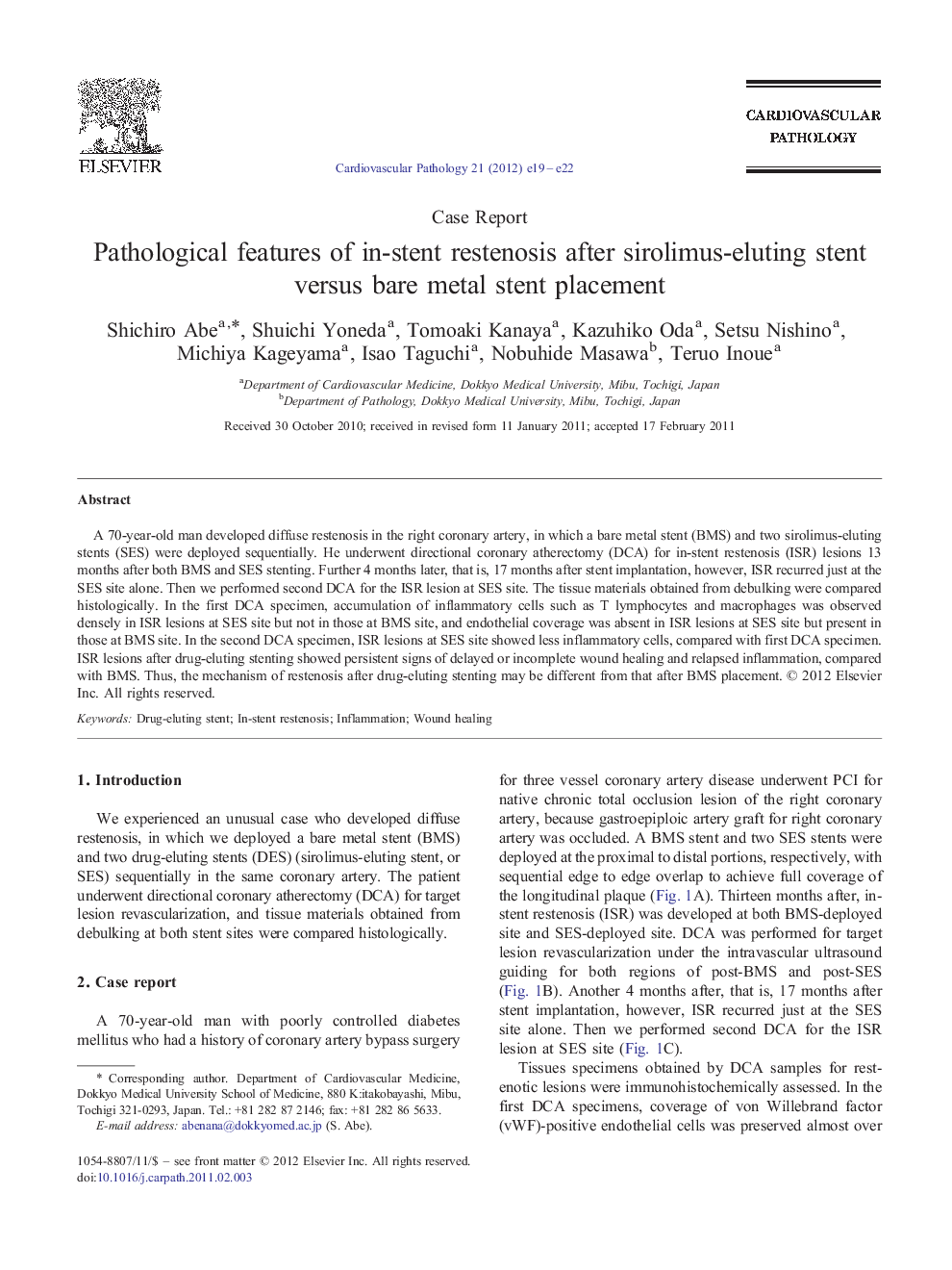| Article ID | Journal | Published Year | Pages | File Type |
|---|---|---|---|---|
| 2898798 | Cardiovascular Pathology | 2012 | 4 Pages |
A 70-year-old man developed diffuse restenosis in the right coronary artery, in which a bare metal stent (BMS) and two sirolimus-eluting stents (SES) were deployed sequentially. He underwent directional coronary atherectomy (DCA) for in-stent restenosis (ISR) lesions 13 months after both BMS and SES stenting. Further 4 months later, that is, 17 months after stent implantation, however, ISR recurred just at the SES site alone. Then we performed second DCA for the ISR lesion at SES site. The tissue materials obtained from debulking were compared histologically. In the first DCA specimen, accumulation of inflammatory cells such as T lymphocytes and macrophages was observed densely in ISR lesions at SES site but not in those at BMS site, and endothelial coverage was absent in ISR lesions at SES site but present in those at BMS site. In the second DCA specimen, ISR lesions at SES site showed less inflammatory cells, compared with first DCA specimen. ISR lesions after drug-eluting stenting showed persistent signs of delayed or incomplete wound healing and relapsed inflammation, compared with BMS. Thus, the mechanism of restenosis after drug-eluting stenting may be different from that after BMS placement.
